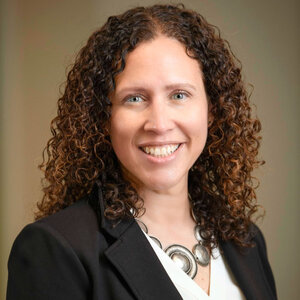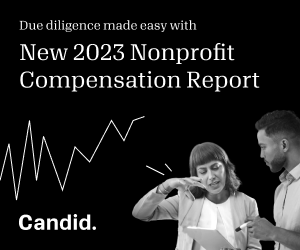How philanthropy can address the worsening affordable housing crisis

Housing affordability in the United States continues to worsen as ever-higher prices put the dream of home ownership out of reach for many families. And no one knows just how bad it will get. About half of Americans say that the availability of affordable housing is a major problem in their area, with increasing numbers of young adults fearing they’ll never be able to buy a home. Meanwhile, the staggering jump in rent is leading to more homelessness. In addition, a large segment of the population is failing to build up home equity, a traditional way to create wealth in America.
And while some cities are building affordable, smaller homes or allowing accessory dwelling units to increase the supply of affordable housing, it simply isn’t enough.
A ray of hope
There’s one recent ray of hope, however, and it comes from outside city government. Philanthropists are uniting efforts and looking at the issue from new perspectives, starting with realizing what failed before.
In past decades, philanthropic institutions made a big push for affordable housing, promoting equality, especially in urban centers. In 2013, for example, the Annie E. Casey Foundation earmarked $100 million to social investments including affordable housing development.
But solving the housing crisis turned out to be more complex than anticipated. After finding the results lacking, many foundations moved on to more successful campaigns such as providing financial education, increasing access to health care, and combating food insecurity.
Then the pandemic hit.
Galvanized, funders committed to pooling resources to make bigger impacts and serve as the connective tissue between the public and private sectors. Their efforts won plaudits in 2020 as they gave away a staggering $20 billion toward COVID relief, with about a fourth of that amount coming from philanthropist MacKenzie Scott, This influx helped to keep many families from falling further into poverty as the pandemic raged.
A fresh look
Philanthropists are now motivated to take on more difficult tasks such as funding studies to identify where future money would best be spent and supporting advocates who work with local zoning boards and skeptical real estate agents. New thinking in affordable housing has also pushed philanthropies to sign on to projects that are novel or considered too risky for nonprofits or banks.
For example, in the Bronx, MBD Housing Corporation teamed up with real estate developer Trinity Financial to turn a 26-story building into an oasis of convenient, environmentally friendly affordable housing for local and low-income residents. On-site is a community health clinic, a grocery store, a cultural center, and even a campus of Bronx Community College. TD Bank financed this project—the largest “Passive House”-certified building in North America, with 80 percent more energy efficiency than a conventional building.
Given the complexity of the housing puzzle—with multiple stakeholders each having a say and, sometimes, a veto—new thinking also means looking for support in unexpected places. For example, local companies can help pave the way to affordable home ownership for their employees. As housing costs increase, employees typically move farther away where rent is cheaper or homes cost less to purchase, which can short-circuit families’ social networks and add more stressors to daily life, threatening job security.
The Philadelphia Home.Buy.Now program is an excellent example of how philanthropy, together with employers, can serve as the engine in bringing entities together to ease the affordable housing crisis. This initiative to break down barriers for employees to become homeowners is driven by the City of Philadelphia's Division of Housing and Community Development and jointly administered with nonprofit Urban Affairs Coalition (UAC). The Home.Buy.Now program provides matching grants—both the employer and Home.Buy.Now kick in funds for home purchasers.
Having more employee-homeowners is a win-win for all: it helps the city stabilize neighborhoods and build the tax base while providing employers with a means to strengthen job satisfaction and improve the communities in their footprint.
I can personally attest to how programs like these can change lives. I myself became a homeowner in my 20s via a home ownership program at the Philadelphia Housing Authority.
The surprising benefit of competition
We at TD Bank have also seen recent success in creating stronger and more widespread competition for grants in affordable housing. In TD Bank’s annual Housing for Everyone competition, we highlight specific issues like affordable housing preservation and anti-eviction programs in a problem statement and call for nonprofits in the field to create new solutions.
Competitions like these are noteworthy because winners must show—through data and metrics—that money was spent effectively and efficiently. That information, in turn, creates an evidence base from which to build upon and use elsewhere.
The funding community typically has a three-to-five-year timeline for its initiatives, but when it comes to solving the housing crisis, we must prepare for a marathon, not a sprint. We need to come to grips with the reality that it has taken several generations to arrive where we are today; therefore, a successful long-term solution will require time and a great deal of patience. And we cannot allow fear of failure to stand in the way of novel thinking; even if some experiments lead to failure along the way, lessons will be learned to build upon.
I’m confident that philanthropy is the key to future progress.
Shelley Sylva is head of corporate citizenship at TD Bank, where she also led the TD Ready Commitment, a billion-dollar philanthropic initiative focused on social and environmental issues. She was a 2021 Philadelphia Business Journal Woman of Distinction honoree.








Fund communities of color ‘like you want us to win’